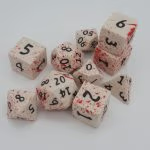Mastering the Art of the Gnome Rogue in D&D: A Beginner’s Guide
Are you ready to dive into the thrilling world of Dungeons & Dragons (D&D) and play a character that’s as cunning as it is charming? Look no further! In this guide, we’ll explore how to create and master the Gnome Rogue, a perfect combination of wit, agility, and a sprinkle of magic. Whether you’re a seasoned adventurer or a newbie to the game, this guide will equip you with all the tips and tricks you need to make your Gnome Rogue truly shine.
Why Choose a Gnome Rogue?
The Gnome Rogue is an excellent choice for players who enjoy versatility, cleverness, and a bit of mischief. Gnomes are known for their curiosity and ingenuity, while Rogues excel in stealth, dexterity, and combat tactics. When combined, these traits create a character that’s not only effective in battle but also a delight to role-play.
Key Attributes and Abilities
Before we dive into the specifics, let’s look at the key attributes and abilities that make the Gnome Rogue a standout character:
- Dexterity: This is your primary attribute. It enhances your ability to sneak, pick locks, and dodge attacks.
- Intelligence: Gnomes receive a bonus to their Intelligence score, which can be beneficial for certain Rogue skills like Investigation.
- Darkvision: Gnomes can see in the dark, giving you an advantage in dimly lit environments.
- Gnome Cunning: This ability grants you advantage on all Intelligence, Wisdom, and Charisma saving throws against magic.
- Expertise: At first level, you can choose two of your skill proficiencies to double your proficiency bonus. This makes your Gnome Rogue exceptionally skilled in those areas.
Creating Your Gnome Rogue
Now that we know why the Gnome Rogue is a fantastic choice, let’s get started on creating your character.
Step 1: Choose Your Gnome Subrace
There are two primary Gnome subraces: Rock Gnome and Forest Gnome. Each has its own unique traits:
- Rock Gnome: Known for their inventiveness, Rock Gnomes receive a bonus to their Constitution score and have the Tinker ability, allowing them to create small mechanical devices.
- Forest Gnome: These Gnomes are more attuned to nature. They receive a bonus to their Dexterity score and can communicate with small animals through the Speak with Small Beasts ability.
Step 2: Assign Ability Scores
As a Rogue, your primary focus should be on Dexterity, followed by Intelligence and Constitution. A good starting point for your ability scores could be:
- Dexterity: 16
- Intelligence: 14
- Constitution: 12
- Wisdom: 10
- Charisma: 10
- Strength: 8
Step 3: Select Skills and Equipment
Rogues have access to a wide range of skills. Consider choosing skills that complement your character’s background and playstyle. Some recommended skills include Stealth, Acrobatics, and Sleight of Hand. For equipment, a short sword, a shortbow, and thieves’ tools are essential for any Rogue.
Tips and Tricks for Beginners
Playing a Gnome Rogue can be incredibly fun and rewarding. Here are some tips and tricks to help you get started:
1. Embrace Your Sneakiness
As a Rogue, stealth is your best friend. Always look for opportunities to hide, move silently, and surprise your enemies with sneak attacks. Use your environment to your advantage, and remember that a well-timed ambush can turn the tide of battle.
2. Utilize Your Gnome Traits
Don’t forget about your Gnome-specific abilities. Darkvision allows you to see in low-light conditions, making you an excellent scout in dark dungeons. Gnome Cunning gives you an edge against magical effects, so be sure to leverage it when facing spellcasters.
3. Maximize Your Skills
Take full advantage of the Expertise ability. Choose skills that will be useful in a variety of situations, such as Stealth, Perception, or Thieves’ Tools. This will make you a valuable asset to your party both in and out of combat.
4. Communicate with Your Party
While the Gnome Rogue is an independent and self-sufficient character, teamwork is essential in D&D. Communicate with your party members, share your plans, and coordinate your actions to ensure everyone is on the same page. This will lead to more successful adventures and a more enjoyable experience for everyone.
5. Have Fun with Role-Playing
One of the best parts of playing a Gnome Rogue is the role-playing opportunities. Embrace your character’s curiosity, wit, and mischievous nature. Create a backstory that explains why your Gnome chose the path of the Rogue, and use it to inform your decisions and interactions with other characters.
Conclusion
Creating and playing a Gnome Rogue in D&D is a fantastic way to experience the game. With their unique blend of agility, intelligence, and magical resistance, Gnome Rogues are both effective and entertaining characters. By following this guide and incorporating the tips and tricks provided, you’ll be well on your way to mastering the art of the Gnome Rogue. So gather your dice, join your party, and embark on an unforgettable adventure!
Happy adventuring!
Author: Cedric Santiago
-
Psyy O’Narrah Ceramic Dice Set
Select options This product has multiple variants. The options may be chosen on the product page -
10d6 Assorted Ceramic Dice Set
Select options This product has multiple variants. The options may be chosen on the product page -



